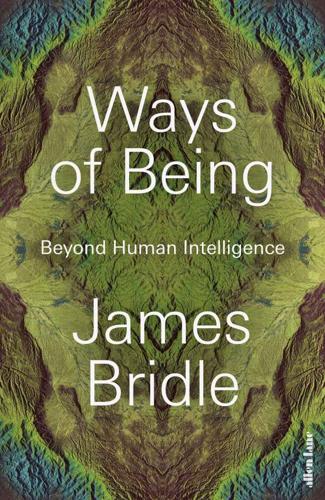
Ways of Being: Beyond Human Intelligence
by
James Bridle
Published 6 Apr 2022
James Bridle * * * WAYS OF BEING Beyond Human Intelligence Contents List of Illustrations Introduction: More than Human 1 Thinking Otherwise 2 Wood Wide Webs 3 The Thicket of Life 4 Seeing Like a Planet 5 Talking to Strangers 6 Non-Binary Machines 7 Getting Random 8 Solidarity 9 The Internet of Animals Conclusion: Down on the Metal Farm Notes Bibliography Acknowledgements Index About the Author James Bridle is a writer and artist. Their writing on art, politics, culture and technology has appeared in magazines and newspapers including the Guardian and the Observer, Wired, the Atlantic, the New Statesman, Frieze, Domus, and ICON.
…
What about Ass Rights? What about Worm Rights? What about Germ Rights? What about Plant Rights? – Moondog ‘Enough about Human Rights’, from the album H’art Songs by Moondog, 1978 List of Illustrations 1. Visualizations of a neural network’s way of seeing. Image: James Bridle. 2. Autonomous Trap 001, Mount Parnassus, 2017. Image: James Bridle. 3. Illustration from Benjamin B. Beck, ‘A Study of Problem Solving by Gibbons’, Behaviour, 28 (1/2), 1967, p. 95 Reproduced with permission from Brill. 4. Portrait of Jenny, the first orang-utan at London Zoo. Printed by W. Clerk, High Holborn, in December 1837.
…
O. 305–6 Wittgenstein, Ludwig 180 Woese, Carl 103–5 Wolff, Christian 228 wolves 149, 286–90, 294, 297 Wonder, Stevie 66 Wood Wide Web 80–82 Wyoming Migration Initiative 298–9, 299 Yamuna River 266 Yao (people) 144–6, 165 Yellowstone to Yukon Conservation Initiative (Y2Y) 290–91, 294, 297, 300 Ymittos 67 yo-he-ho theory 147 Yunkaporta, Tyson 172 Zakynthos 3–4 Zen Buddhism 233 zoos 48, 97, 250 Bronx Zoo 29–41, 263–5 Chicago Zoo 32 escapes from 253–5 London Zoo 35–6 National Zoological Park (Washington DC) 38 San Diego Zoo 253, 279 argument for abolition 1–350 THIS IS JUST THE BEGINNING Find us online and join the conversation Follow us on Twitter twitter.com/penguinukbooks Like us on Facebook facebook.com/penguinbooks Share the love on Instagram instagram.com/penguinukbooks Watch our authors on YouTube youtube.com/penguinbooks Pin Penguin books to your Pinterest pinterest.com/penguinukbooks Listen to audiobook clips at soundcloud.com/penguin-books Find out more about the author and discover your next read at penguin.co.uk PENGUIN BOOKS UK | USA | Canada | Ireland | Australia New Zealand | India | South Africa Penguin Books is part of the Penguin Random House group of companies whose addresses can be found at global.penguinrandomhouse.com. First published by Allen Lane in 2022 Copyright © James Bridle, 2022 The moral right of the author has been asserted Cover design by Matthew Young after James Bridle’s own Rorschmap Satellite image from the United States Geological Survey on Unsplash ISBN: 978-0-141-99427-7 This ebook is copyright material and must not be copied, reproduced, transferred, distributed, leased, licensed or publicly performed or used in any way except as specifically permitted in writing by the publishers, as allowed under the terms and conditions under which it was purchased or as strictly permitted by applicable copyright law.

New Dark Age: Technology and the End of the Future
by
James Bridle
Published 18 Jun 2018
Baltz, et al., ‘Achievement of Sustained Net Plasma Heating in a Fusion Experiment with the Optometrist Algorithm’, Nature Scientific Reports 7 (2017), nature.com. 28.Albert van Helden and Thomas Hankins, eds, Osiris, Volume 9: Instruments, Chicago: University of Chicago Press, 1994. 5Complexity 1.Guy Debord, ‘Introduction to a Critique of Urban Geography’, Les Lèvres Nues 6 (1955), available at library.nothingness.org. 2.James Bridle, The Nor, essay series, 2014–15, available at shorttermmemoryloss.com. 3.Jame Bridle, ‘All Cameras are Police Cameras’, The Nor, November 2014. 4.James Bridle, ‘Living in the Electromagnetic Spectrum’, The Nor, December 2014. 5.Christopher Steiner, ‘Wall Street’s Speed War’, Forbes, September 9, 2010, forbes.com. 6.Kevin Fitchard, ‘Wall Street gains an edge by trading over microwaves’, GigaOM, February 10, 2012, gigaom.com. 7.Luis A.
…
New Dark Age New Dark Age Technology and the End of the Future James Bridle First published by Verso 2018 © James Bridle 2018 All rights reserved The moral rights of the author have been asserted 1 3 5 7 9 10 8 6 4 2 Verso UK: 6 Meard Street, London W1F 0EG US: 20 Jay Street, Suite 1010, Brooklyn, NY 11201 versobooks.com Verso is the imprint of New Left Books ISBN-13: 978-1-78663-547-1 ISBN-13: 978-1-78663-549-5 (UK EBK) ISBN-13: 978-1-78663-550-1 (US EBK) British Library Cataloguing in Publication Data A catalogue record for this book is available from the British Library Library of Congress Cataloging-in-Publication Data A catalog record for this book is available from the Library of Congress Typeset in Sabon by Biblichor Ltd, Edinburgh Printed and bound by CPI Group (UK) Ltd, Croydon, CR0 4YY For Navine Contents 1.Chasm 2.Computation 3.Climate 4.Calculation 5.Complexity 6.Cognition 7.Complicity 8.Conspiracy 9.Concurrency 10.Cloud Acknowledgements Notes Index 1 Chasm ‘If only technology could invent some way of getting in touch with you in an emergency,’ said my computer, repeatedly.
…
At the other end of the journey was another unmarked data centre facility: seven acres of server space distinguishable only by a fluttering Union Jack, and by the fact that if you linger too long on the road in front of it, you will be harassed by security guards. This is the Euronext Data Center, the European outpost of the New York Stock Exchange, whose operations are likewise obscure and virtual. Photograph: James Bridle. LD4 Data Center, Slough. Photograph: James Bridle. NYSE Euronext Data Center, Basildon. Connecting these two locations is an almost invisible line of microwave transmissions: narrow beams of information that bounce from dish to dish and tower to tower, carrying financial information of almost unimaginable value at close to the speed of light.
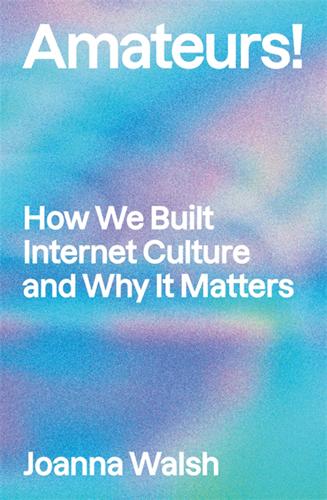
Amateurs!: How We Built Internet Culture and Why It Matters
by
Joanna Walsh
Published 22 Sep 2025
, knowyourmeme.com. 41.John Cook, ‘Q&A: Ben Huh of I Can Has Cheezburger on tech, cats and more’, Venture Blog, 6 November 2008. 2011: The Old Aesthetic 1.Andrew Blum, ‘Children of the Drone’, Vanity Fair, 12 June 2013. 2.Ian Bogost, ‘The New Aesthetic Needs To Get Weirder’, Atlantic, 13 April 2012. 235 3.James Bridle, ‘The New Aesthetic and Its Politics’, booktwo.org, 12 June 2013. 4.Jason Kottke, ‘Tumblelogs’, kottke.org, 19 October 2005. 5.Bruce Sterling, ‘An Essay on the New Aesthetic’, Wired, 2 April 2012. 6.Blum, ‘Children of the Drone’. 7.Russell Davis, ‘something something something’, russelldavies.typepad.com, 5 October 2010. 8.Ibid. 9.Phil Gyford, ‘One of today’s futures’, gyford.com, 26 May 2011. 10.James Bridle, ‘The New Aesthetic and Its Politics’. 11.James Bridle, ‘The New Aesthetic (+10)’, booktwo.org, 6 May 2021. 12.Robert Jackson, ‘The Banality of the New Aesthetic’, furtherfield.org, 15 April 2012. 13.Hito Steyerl, ‘In Defence of the Poor Image’, e-flux.com, no. 10, November 2009. 14.John Ruskin, ‘Of the Turnerian Picturesque’, in Modern Painters (Knopf, 1987 [1843–60]), p. 427. 15.Ibid., p. 423. 16.Ibid., p. 432. 17.Joseph Addison, ‘Geneva and the Lake’, in Remarks on Several Parts of Italy etc. in the Years 1701, 1702, 1703 (T.
…
This uncomfortable alliance is a version of what’s called skeuomorphic, like a digital radio housed in a retro case that has the appearance of old tech. But this time it’s the other way round: it looks new but the system it houses is old. Nothing sounds older than a new aesthetic. It must have been with a sense of irony that artist/technologist/publisher James Bridle coined the phrase ‘the New Aesthetic’ in 2011. Or maybe not. The New Aesthetic was a project that gazed at the digital 54gaze. How do machines see things? ‘For so long we’ve stared up at space in wonder,’ Bridle began a post in documentary voiceover mode on his blog, booktwo.org, in 2011, ‘but with cheap satellite imagery and cameras on kites and RC helicopters, we’re looking at the ground with new eyes, to see structures and infrastructures.’
…
If hauntology longs for a missing future, then vaporwave is the aesthetic expression of a longing for that longing. It is nostalgia, not for the future but for a vision of the future from the past. 70Vaporwave’s composite aesthetic practice marries music with visuals, sampling and riffing on US interpretations of Japanese commercial art of the 1980s. Vaporwave is so concerned with, as James Bridle said, ‘what it looks like’ that its aesthetic is spelled out aesthatically, as ‘a e s t h e t i c’ or ‘A E S T H E T I C’. Its images were largely created to furnish visual material for vaporwave music, an electronic genre that works over earlier generations of kitsch (elevator music, lobby jazz) – usually with an element of pastiche signalled via exaggeration or glitch: the music is slowed and looped.
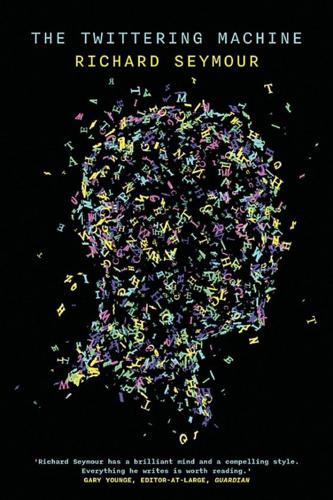
The Twittering Machine
by
Richard Seymour
Published 20 Aug 2019
John Naughton, ‘Extremism pays. That’s why Silicon Valley isn’t shutting it down’, Guardian, 18 March 2018. 11. As former Google engineer Guillaume Chaslot put it . . . Paul Lewis, ‘“Fiction is outperforming reality”: how YouTube’s algorithm distorts truth’, Guardian, 2 February 2018. 12. The artist James Bridle has written . . . James Bridle, ‘Something is wrong on the internet’, Medium, 6 November 2017. 13. . . . it reflected data coming from . . . Tracy McVeigh, ‘Amazon acts to halt sales of “Keep Calm and Rape” T-shirts’, Guardian, 2 March 2013; Colin Lecher, ‘“Keep Calm And Rape”, Plus 5 More Awful/Offensive/Hilarious Algorithm-Created Shirts’, Popular Science, 6 March 2013. 14.
…
Rather, the platforms, by their nature, are magnetically drawn to drama, whether political or personal. The user becomes, in China Miéville’s term, a ‘dramaphage’. The content agnosticism of computational capitalism has political valences, but the algorithm’s effects go well beyond political content. The artist James Bridle has written of the surprisingly outré and noir YouTube content for kids, which involves erotic or violent content: Peppa Pig eating her daddy or drinking bleach, for example.12 This material was created to meet a demand identified by the algorithms – in other words, it reflected data coming from users: searches, likes, clicks and watch time.13 In this respect, it was not unlike the algorithm-driven merchandise of previous years: t-shirts with such slogans as ‘Keep Calm and Rape a Lot’, ‘Kiss Me I’m Abusive’ and ‘I Heart Boiling Girls’.
…
Hayley Tsukayama, ‘Teens spend nearly nine hours every day consuming media’, Washington Post, 9 November 2015. 12. And the number of us checking our phones . . . Deloitte, ‘Global mobile consumer trends’, 2nd edition, 2017 <www2.deloitte.com>. 13. . . . violent, eroticized, animated fantasies aimed at children . . . James Bridle, ‘Something is wrong on the internet’, Medium.com, 6 November 2017. 14. This is the ‘modern calculating machine’ . . . Jacques Lacan, ‘Seminar on “The Purloined Letter” ’, in Écrits: The First Complete Edition in English, W. W. Norton & Company: New York, 2006, p. 45. On the cybernetic origins of Lacan’s thinking here, see Lydia H.

New Laws of Robotics: Defending Human Expertise in the Age of AI
by
Frank Pasquale
Published 14 May 2020
Evan Osnos, “Can Mark Zuckerberg Fix Facebook before It Breaks Democracy?” New Yorker, September 10, 2018, https://www.newyorker.com/magazine/2018/09/17/can-mark-zuckerberg-fix-facebook-before-it-breaks-democracy. 32. James Bridle, “Something Is Wrong on the Internet,” Medium, https://medium.com/@jamesbridle/something-is-wrong-on-the-internet-c39c471271d2. 33. James Bridle, New Dark Age (New York: Verso, 2018), 230. 34. Max Fisher and Amanda Taub, “On YouTube’s Digital Playground, an Open Gate for Pedophiles,” New York Times, June 3, 2019, at https://www.nytimes.com/2019/06/03/world/americas/youtube-pedophiles.html. 35.
…
YouTube’s ordinary content review processes can in principle improve over time to catch these videos more quickly. Some algorithmically generated content, however, raises another level of concern. Given the rise of automated remixes online, innocent cartoon characters like Peppa Pig may be chatting with friends in one video, then brandishing knives and guns in a “satire” auto-played right after. As artist James Bridle has observed, this goes beyond ordinary anxieties about decency. What is worrying about the Peppa videos, Bridle argues, “is how the obvious parodies and even the shadier knock-offs interact with the legions of algorithmic content producers until it is completely impossible to know what is going on”—be it artistic creativity, satire, cruelty, or perverse efforts to introduce small children to violent or sexualized content.32 A context of no-context commingles all these forms, fraternizing incompatibles.
…
Sarah Schwarz, “YouTube Accused of Targeting Children with Ads, Violating Federal Privacy Law,” Education Week: Digital Education (blog), April 13, 2018, http://blogs.edweek.org/edweek/DigitalEducation/2018/04/youtube_targeted_ads_coppa_complaint.html; John Montgallo, “Android App Tracking Improperly Follows Children, Study,” QR Code Press, April 18, 2018, http://www.qrcodepress.com/android-app-tracking-improperly-follows-children-study/8534453/. 39. James Bridle, “Something Is Wrong on the Internet,” Medium, November 6, 2017, https://medium.com/@jamesbridle/something-is-wrong-on-the-internet-c39c471271d2. 40. Nick Statt, “YouTube Will Reportedly Release a Kids’ App Curated by Humans,” Verge, April 6, 2018, https://www.theverge.com/2018/4/6/17208532/youtube-kids-non-algorithmic-version-whitelisted-conspiracy-theories. 41.
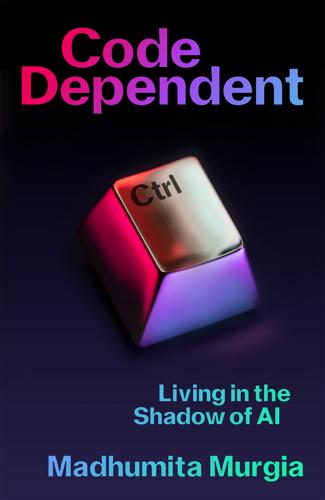
Code Dependent: Living in the Shadow of AI
by
Madhumita Murgia
Published 20 Mar 2024
Tech giants like Google and Meta have applied machine learning to target advertising as narrowly as possible and grow their worth up to $1tn. This lucrative business model that monetizes personal data is what American social psychologist and philosopher Shoshana Zuboff has called ‘surveillance capitalism’. As the artist James Bridle wrote in an essay last year, ‘These companies made their money by inserting themselves into every aspect of everyday life, including the most personal and creative areas of our lives: our secret passions, our private conversations, our likenesses and our dreams.’2 * Nowadays, we live daily alongside automated systems built on data, their inner workings dictating our personal bonds, power dynamics at work, and our relationship with the state.
…
The digital inventions were, of course, inexpensive to create in bulk. They didn’t require hours of painstaking sketching, drafting and riffing. The scraping of the most precious part of our humanity – our creativity – in order to build replacements for the very people revered for it was the ultimate form of data colonialism. As artist James Bridle wrote: ‘They enclosed our imaginations in much the same manner as landlords and robber barons enclosed once-common lands . . . Instead, they are selling us back our dreams repackaged as the products of machines.’15 The promise made by generative AI builders is that the technology will open up a new era of human experience, provide access to cheap intelligence and mass creativity.
…
Stability AI, the company that sells the Stable Diffusion model, said it would allow artists to then opt out of their images being used as training fodder for its tools. As of last March, more than eight million artworks were opted out through the site.18 Others such as OpenAI have agreed to follow suit, providing opt-out forms on their websites for artists who don’t want their work to help build creative AI tools that could replace them. As James Bridle put it, artists felt that these software tools were nothing but ‘expropriated labour from the many, for the enrichment and advancement of a few . . . companies and their billionaire owners.’ On a June afternoon last year, I met Laurence Bouvard, a voiceover artist and actress whose voice has featured in places like the Galbani and Dolmio commercials (‘I’m Nico!’

We Are Data: Algorithms and the Making of Our Digital Selves
by
John Cheney-Lippold
Published 1 May 2017
Algorithmic power “does not confront ‘subjects’ as moral agents (avoiding to question them about their preferences and intentions, about the reasons and motivations of their actions) but attunes their future informational and physical environment according to the predictions contained in the statistical body.”63 While the empiricism of this irresistible control still remains hypothetical, as in the ZunZuneo example of chapter 2, I want to emphasize the yet-completeness of such a theorization. Online we recognize ourselves not necessarily as unique subjects or “moral agents” but as entities who can be reflexive in ways that might not come in the form of direct, bare-knuckled recalcitrance. Figure 3.2. A screenshot from James Bridle’s Citizen-Ex. In the case of jus algoritmi, we encounter reflexivity in the fact that we know it exists. The datafied subject relation that assigns ‘foreigner’ and ‘citizen’ might seem hidden from us as a secret interpretation of our metadata. But the 2013 Snowden leaks alert us to the possibility, and underlying logic, of how this kind of algorithmic ‘citizenship’ works.
…
Accordingly, we recognize that any interpretation, from state power to metaphysical claims to identity, orders our lives in inconsistent ways. In this formative disconnection, we can feel the space between one’s citizenship and one’s ‘citizenship.’ For instance, upon learning that the NSA valued Internet metadata to ascertain users’ ‘foreignness,’ UK artist James Bridle and others developed a browser add-on called Citizen-Ex that, following my earlier work on jus algoritmi’s logic, made users aware of NSA surveillance through a “just-in-time,” artistic interpretation of their quantitative ‘citizenship’ (figure 3.2).64 The fact that one’s Citizen-Ex ‘citizenship’ is more than likely distinct from one’s formal citizenship alerts us to our reflexivity and thus conditions how we experience the multiplicities of our algorithmic identities.
…
Franklin, Control, 9. 62. Antoinette Rouvroy, “The End(s) of Critique: Data Behaviourism versus Due Process,” in Privacy, Due Process, and the Computational Turn: The Philosophy of Law Meets the Philosophy of Technology, ed. Mireille Hildebrandt and Katja de Vries (London: Routledge, 2013), 157. 63. Ibid. 64. James Bridle, “Citizen-Ex,” 2015, https://citizen-ex.com. 65. Marissa Moorman, “Can an Algorithm Be Racist?,” Africa Is a Country (blog), September 29, 2014, http://africasacountry.com. 66. Ibid. 67. This point is admittedly confounded by the dominance of Brazilian Portuguese, which uses “você” as the default second-person subject. 68.
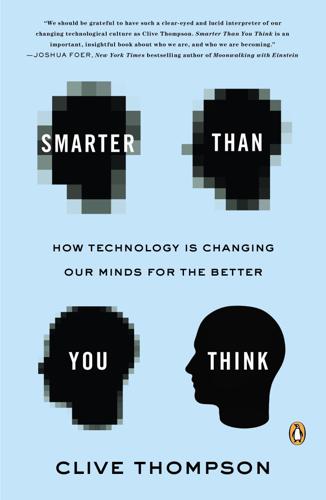
Smarter Than You Think: How Technology Is Changing Our Minds for the Better
by
Clive Thompson
Published 11 Sep 2013
Wikipedia’s process, Weinberger points out, is a part of its product, arguably an indispensable part. Whereas the authority of traditional publishing relies on expertise—trust us because our authors are vetted by our experience, their credentials, or the marketplace—conversational media gains authority by revealing its mechanics. James Bridle, a British writer, artist, and publisher, made this point neatly when he took the entire text of every edit of Wikipedia’s much-disputed entry on the Iraq War during a five-year period and printed it as a set of twelve hardcover books. At nearly seven thousand pages, it was as long as an encyclopedia itself.
…
The Wikipedia Foundation’s own study of Wikipedia’s accuracy is here: Imogen Casebourne, Chris Davies, Michelle Fernandes, and Naomi Norman, “Assessing the Accuracy and Quality of Wikipedia Entries Compared to Popular Online Encyclopedias,” Wikipedia Foundation, August 1, 2012, accessed March 22, 2103, commons.wikimedia.org/wiki/File:EPIC_Oxford_report.pdf. as the author David Weinberger points out: David Weinberger, Everything Is Miscellaneous: The Power of the New Digital Disorder (New York: Henry Holt, 2007), 140–47. “This is historiography”: James Bridle, “On Wikipedia, Cultural Patrimony, and Historiography,” booktwo.org, September 6, 2010, accessed March 22, 2013, booktwo.org/notebook/wikipedia-historiography/. “typographical fixity” of paper: Elizabeth L. Eisenstein, The Printing Press as an Agent of Change (Cambridge, UK: Cambridge University Press, 1980), 113.

Like, Comment, Subscribe: Inside YouTube's Chaotic Rise to World Domination
by
Mark Bergen
Published 5 Sep 2022
On YouTube’s main site this clip had tens of millions of views. A YouTube director told the newspaper that less than “.005 percent” of videos in the Kids app in the last thirty days were flagged as inappropriate, calling them “the extreme needle in the haystack.” But the earth had shaken. And two days later, an avalanche hit. James Bridle, a British author who wrote about drones and warfare, had turned their attention to kids. Bridle published a very long entry on the blogging site Medium with a catchy title, “Something Is Wrong on the Internet.” Bridle’s writing was crisp and detailed, but their visuals told enough of a story.
…
GO TO NOTE REFERENCE IN TEXT on “startling” videos: Sapna Maheshwari, “On YouTube Kids, Startling Videos Slip Past Filters,” The New York Times, November 4, 2017, https://www.nytimes.com/2017/11/04/business/media/youtube-kids-paw-patrol.html. GO TO NOTE REFERENCE IN TEXT on the blogging site Medium: James Bridle, “Something Is Wrong on the Internet,” Medium, November 6, 2017, https://medium.com/@jamesbridle/something-is-wrong-on-the-internet-c39c471271d2. GO TO NOTE REFERENCE IN TEXT Article title: Mark Bridge and Alexi Mostrous, “Child Abuse on YouTube,” The Times, November 18, 2017, https://www.thetimes.co.uk/article/child-abuse-on-youtube-q3x9zfkch.

How to Do Nothing
by
Jenny Odell
Published 8 Apr 2019
Cecily Burt, “Film traces destruction of Emeryville shellmound,” East Bay Times, August 17, 2016: https://www.eastbaytimes.com/2005/06/03/film-traces-destruction-of-emeryville-shellmound/. 17. Coalition to Save the West Berkeley Shellmound & Village Site, “An Ohlone Vision for the Land,” Shellmound—Ohlone Heritage Site and Sacred Grounds: https://shellmound.org/learn-more/ohlone-vision/. 18. James Bridle, “Something is wrong on the internet,” Medium, November 6, 2017: https://medium.com/@jamesbridle/something-is-wrong-on-the-internet-c39c471271d2. 19. Paul Lewis, “‘Our minds can be hijacked’: the tech insiders who fear a smartphone dystopia,” The Guardian, October 6, 2017: https://www.theguardian.com/technology/2017/oct/05/smartphone-addiction-silicon-valley-dystopia. 20.
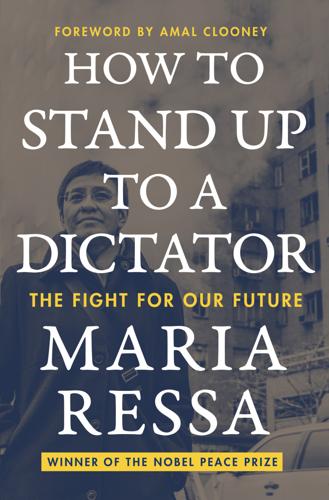
How to Stand Up to a Dictator
by
Maria Ressa
Published 19 Oct 2022
And finally, Sinan Aral’s The Hype Machine: How Social Media Disrupts Our Elections, Our Economy, and Our Health—and How We Must Adapt (New York: Currency, 2020) details some of the dangers but remains a favorable view of the giant, providing the possibility of redemption. 43.Naughton, “The Goal Is to Automate Us.” 44.James Bridle, “The Age of Surveillance Capitalism by Shoshana Zuboff Review—We Are the Pawns,” Guardian, February 2, 2019, https://www.theguardian.com/books/2019/feb/02/age-of-surveillance-capitalism-shoshana-zuboff-review. 45.Shoshana Zuboff wants the market in our behavioral data, like the slave trade, abolished.

Present Shock: When Everything Happens Now
by
Douglas Rushkoff
Published 21 Mar 2013
Lisa Napoli, “As If in a Seller’s Dream, the Bags Fly Out of the Studio,” New York Times, December 7, 2004. 20. Ibid. 21. Gary Wolf, “Tim Ferriss Wants to Hack Your Body,” Wired, December 2010. 22. By 2007, 43 percent of email users said the first thing they do when they wake is check for new messages. AOL study cited in “Email Statistics,” at http://powerprodirect.com. 23. James Bridle, “The New Aesthetic: Waving at the Machines,” talk delivered at Web Directions South, Sydney, Australia, December 5, 2011, http://booktwo.org/notebook/waving-at-machines. 24. Vanessa Grigoriadis, “Everybody Sucks: Gawker and the Rage of the Creative Underclass,” New York, October 14, 2007. 25.

Falter: Has the Human Game Begun to Play Itself Out?
by
Bill McKibben
Published 15 Apr 2019
Paulina Borsook, Cyberselfish: A Critical Romp through the Terribly Libertarian Culture of High Tech (New York: PublicAffairs, 2000), pp. 2–3. 7. Ibid., p. vi. 8. Ibid., p. 215. 9. Ayn Rand, Fountainhead, p. 11. PART THREE: THE NAME OF THE GAME CHAPTER 13 1. Personal conversation, November 22, 2017. 2. James Bridle, “Known Unknowns,” Harper’s, July 2018. 3. “Rise of the Machines,” The Economist, May 22, 2017. 4. “On Welsh Corgis, Computer Vision, and the Power of Deep Learning,” microsoft.com, July 14, 2014. 5. Andrew Roberts, “Elon Musk Says to Forget North Korea Because Artificial Intelligence Is the Real Threat to Humanity,” uproxx.com, August 12, 2017. 6.

The Stack: On Software and Sovereignty
by
Benjamin H. Bratton
Published 19 Feb 2016
For the conversation, critiques, and cajoling, I am in their debt. At some point, I would like to host them all at once for a grand dinner. An incomplete invitation list must include Lida Abdul, Alisa Andrasek, Julieta Aranda, Armen Avanessian, Carla Azar, Juan Azulay, David Bergman, Ryan Bishop, Mike Bonifer, Alexi Bourbeau, James Bridle, Sheldon Brown, Anne Burdick, Jose Caballer, Ben Cerveny, Karl Chu, Peter Cowhey, Jordan Crandall, Kate Crawford, Sean Crowe, Teddy Cruz, Rene Daalder, Marc Davis, Joe Day, Manuel de Landa, Jessica D’Elena, Neil Denari, Robert Densworth, Ricardo Dominguez, Tim Durfee, Keller Easterling, Greg Edwards, Adam Eeuwens, Joel Ericson, Simonetta Falasca-Zamponi, Numair Faraz, Conn Fishburn, Jane Fitzgerald, David Fore, Brady Forrest, Peter Frankfurt, Ming Fung, Vincent Gallo, Alexandra Daisy Ginsberg, Ken Goldberg, Eugene Goreshter, Marcelyn Gow, Adam Greenfield, John R.
…
That heterogeneity may be another bulwark against totalitarianism, and it may also be a path toward another as yet undefined universal materialism, one that is no more or less totalitarian than the laws of mathematics. 76. Bruce Clarke and Mark B. N. Hansen, Emergence and Embodiment: New Essays on Second-Order Systems Theory (Durham, NC: Duke University Press, 2009). 77. Peter Watts, Beyond the Rift (San Francisco: Tachyon Publications, 2013), 9. 78. James Bridle, “Do You Know This Person?” Render Search, http://render-search.com/. 79. Sarah Jaffe, “Silicon Valley's Gig Economy Is Not the Future of Work—It's Driving Down Wages,” Guardian, July 23, 2014, http://www.theguardian.com/commentisfree/2014/jul/23/gig-economy-silicon-valley-taskrabbit-workers. 80.
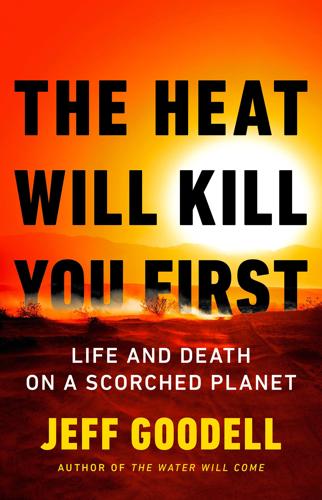
The Heat Will Kill You First: Life and Death on a Scorched Planet
by
Jeff Goodell
Published 10 Jul 2023
“The Great Dust Storm.” https://www.woodyguthrie.org/Lyrics/Dust_Storm_Disaster.htm 40 and 70 percent: Sonia Shah. The Next Great Migration: The Beauty and Terror of Life on the Move (New York: Bloomsbury, 2020), 5. twenty kilometers: Ibid. four times faster: Ibid. Atlantic cod: Ibid. frogs and fungi: Ibid. coral polyps: Ibid. two miles per decade: James Bridle. “The Speed of a Tree: How Plants Migrate to Outpace Climate Change.” Financial Times, April 1, 2022. https://www.ft.com/content/7d7621cd-7bb5-4f97-94f1-6985ce038e13 white spruce: Ibid. Thick-billed murres: Emily S. Choy et al. “Limited Heat Tolerance in a Cold-Adapted Seabird: Implications of a Warming Arctic.”

The Age of Entitlement: America Since the Sixties
by
Christopher Caldwell
Published 21 Jan 2020
“earn a virtual reward”: Jodi Kantor and David Streitfeld, “Inside Amazon: Wrestling Big Ideas in a Bruising Workplace,” New York Times, August 16, 2015. “We noticed recently”: Christopher Caldwell, “OkCupid’s Venal Experiment Was a Poisoned Arrow,” Financial Times, August 2–3, 2014. more than a third of Americans: James Bridle, “The Science of Seduction,” The Observer, February 9, 2014. Now they would be set: Lawrence Lessig, Code and Other Laws of Cyberspace (New York: Basic Books, 1999). “As the network power”: David Singh Grewal, Network Power: The Social Dynamics of Globalization (New Haven: Yale University Press, 2008), 34.

Data and Goliath: The Hidden Battles to Collect Your Data and Control Your World
by
Bruce Schneier
Published 2 Mar 2015
single national database: Josh Hicks (18 Feb 2014), “Homeland Security wants to build national database using license plate scanners,” Washington Post, http://www.washingtonpost.com/blogs/federal-eye/wp/2014/02/18/homeland-security-wants-to-build-national-database-using-license-plate-scanners. Dan Froomkin (17 Mar 2014), “Reports of the death of a national license-plate tracking database have been greatly exaggerated,” Intercept, https://firstlook.org/theintercept/2014/03/17/1756license-plate-tracking-database. In the UK, a similar government-run system: James Bridle (18 Dec 2013), “How Britain exported next-generation surveillance,” Medium, https://medium.com/matter-archive/how-britain-exported-next-generation-surveillance-d15b5801b79e. Jennifer Lynch and Peter Bibring (6 May 2013), “Automated license plate readers threaten our privacy,” Electronic Frontier Foundation, https://www.eff.org/deeplinks/2013/05/alpr.

American Girls: Social Media and the Secret Lives of Teenagers
by
Nancy Jo Sales
Published 23 Feb 2016
The “aesthetic” aesthetic evolved in the late 2000s with the 2007 advent of Tumblr and other sites devoted to the posting of one’s own art, as well as aggregated images of art and fashion and photography. It’s used to describe a sense that social media posting is art—or can be art, if it’s “aesthetic” enough. (Not to be confused with, although perhaps related to, the “New Aesthetic” concept introduced by British artist and writer James Bridle in 2011 to describe the response to technology by artists working in the digital age.) “You can, like, post a picture of your cereal,” Sophia said, “but you have to make it aesthetic.” “Aesthetic” looks, aesthetically, like a manifestation of hipster style, as exemplified by Sofia Coppola’s The Virgin Suicides, with a dose of Rookie and Real Simple magazines.

Lonely Planet London City Guide
by
Tom Masters
,
Steve Fallon
and
Vesna Maric
Published 31 Jan 2010
* * * Return to beginning of chapter THANKS TOM MASTERS Thanks enormously to Mike Christie who lent me his home as a base for my research. Thanks also to Steve Fallon and Vesna Maric for all their excellent hard work carving up a city as immense as London with me. Thanks to Clifton Wilkinson in the London office for commissioning me again, and as always, to James Bridle whose love of all things London has always been infective. Thanks also to Tommy Moss, Gabriel Gatehouse, Stephen Dorling, Zeeba Carroll, Gray Jordan, Chris Mackay, Leila Rejali, Stephen Billington and Etienne Gilfillan for their company and help while researching this book. STEVE FALLON I frequently enter the Underground at Bethnal Green, where 173 people (over a third of them children) were killed during an air raid in March 1943, the highest loss of civilian life in a single incident in London during WWII.